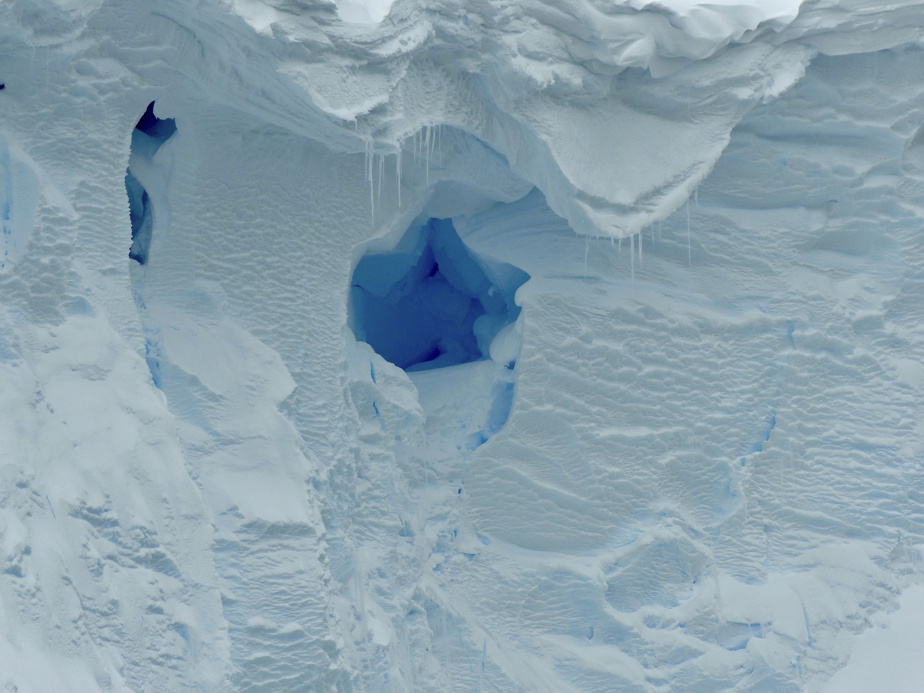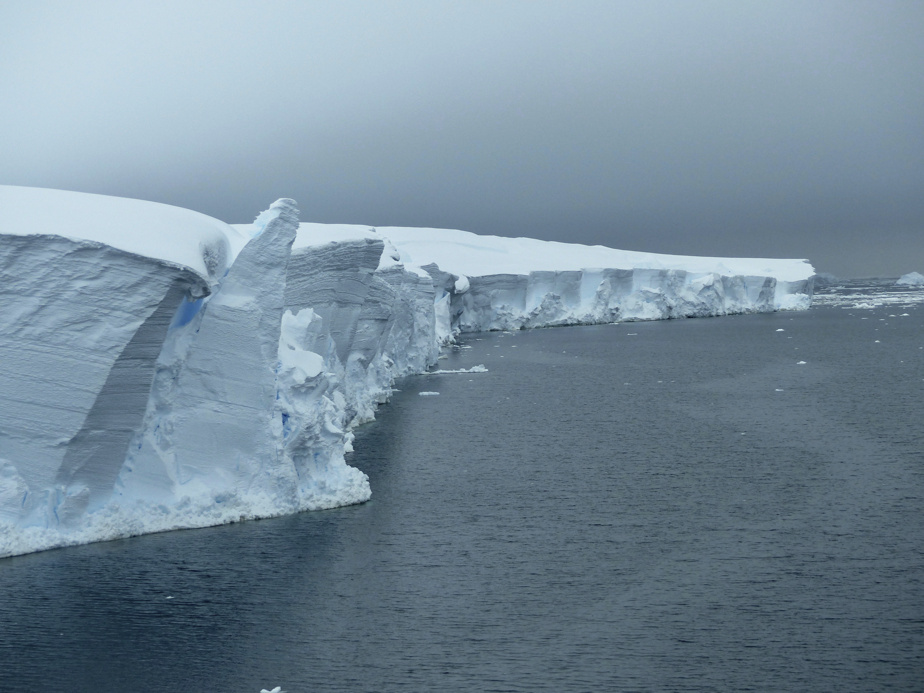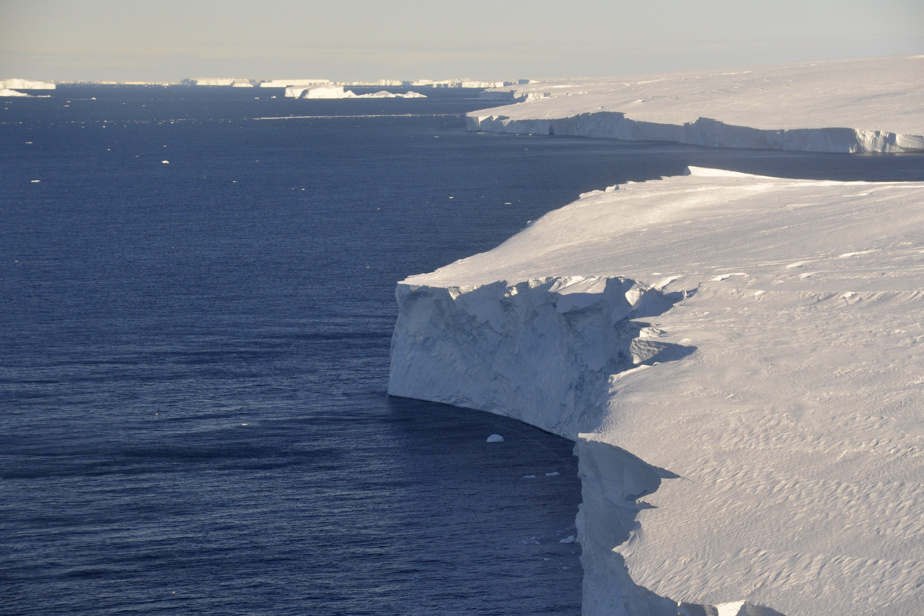(New York) Scientists are heading to one of the most inaccessible places on Earth to understand the impact of melting Antarctic ice on rising sea levels.
32 researchers embarked on a more than two-month mission aboard a US science ship Thursday to study the area where the glacier faces the Amundsen Sea, and where large amounts of ice can fall. .
This glacier, about the size of Florida, has been nicknamed “the apocalypse of the glacier” because of the huge amounts of ice it contains. If all this ice melted, sea level could rise by 65 cm over several centuries.
Because of its importance, the United Kingdom and the United States launched a $50 million mission to study the Thwaites Glacier, the largest in the world on land and sea. Far from all the research stations on the mainland, Thwaites is in the western part of Antarctica, east of the Antarctic Peninsula, which was once the area of greatest interest to researchers.

British Antarctic Survey Image via Linked Archives
This image, released in 2019 by the British Antarctic Survey, shows a gaping hole in the Thwaites Glacier in Antarctica. Thwaites’ ice shelf is littered with hundreds of fractures, like damaged windshields.
“I would say Thwaites is the main reason why there is so much uncertainty about sea level rise in the future, because it’s in a very remote corner and hard to reach,” Anna said on Wednesday. Wahlin, an oceanographer at the University of Gothenburg, Sweden.
MI Wahleen joined aboard the research vessel Nathaniel P. Palmer, which was due to leave Chile’s port within the next few hours. “His setup makes it probably unstable, and that’s what worries us,” she said.
Thwaites sends about 50 billion tons of ice into the water each year. The British Antarctic Survey calculates that the glacier is responsible for 4% of the global rise in ocean levels, and conditions that cause more ice loss are accelerating, warns Ted Schampos, a glaciologist at the University of Colorado. It is based at McMurdo Ground Station.
Oregon State University glaciologist Erin Pettit explained that Thwaites appears to collapse in three ways:
Solubility due to sea water
The terrestrial portion of the glacier appears to be “losing its grip” as it connects to the ocean floor. So a large part can fall into the sea and possibly melt.

British Antarctic Survey Image via Linked Archives
The Thwaites Glacier, which is the size of Florida, has been nicknamed the “glacial apocalypse” because of the massive amounts of ice it contains. And if all this ice melted, sea level could rise by 65 cm over several centuries.
Thwaites’ ice shelf is littered with hundreds of fractures, like damaged windshields. This is what worries me the mostI Pettit, who explained that cracks as long as ten kilometers appeared in just one year.
No one had ever set foot on the icy seafront crucial to Thwaites before. In the year 2019 ADI Wahleen was on a ship that explored the area with a robot deployed from a ship, but she never set foot ashore.
This time the M team.I Wahlin will use two motor ships to dive below Thwaites and examine the portion of the glacier that overlooks the ocean.
Scientists will measure the temperature of the water, examine the ocean floor, and measure the thickness of the ice. They will examine the cracks in the ice and the way the ice forms. They will also mark the seals on the islands off the glacier.
“They look different than other ice shelves,” M. N. Thwaites said.I Welcome.
“It looks like a stack of icebergs that have been pressed together,” she said. So it’s more and more obvious that it’s not a single piece of hard ice like other ice shelves, and it’s nice homogeneous ice. It is more fragmented and scarred. ”

“Extreme twitteraholic. Passionate travel nerd. Hardcore zombie trailblazer. Web fanatic. Evil bacon geek.”

